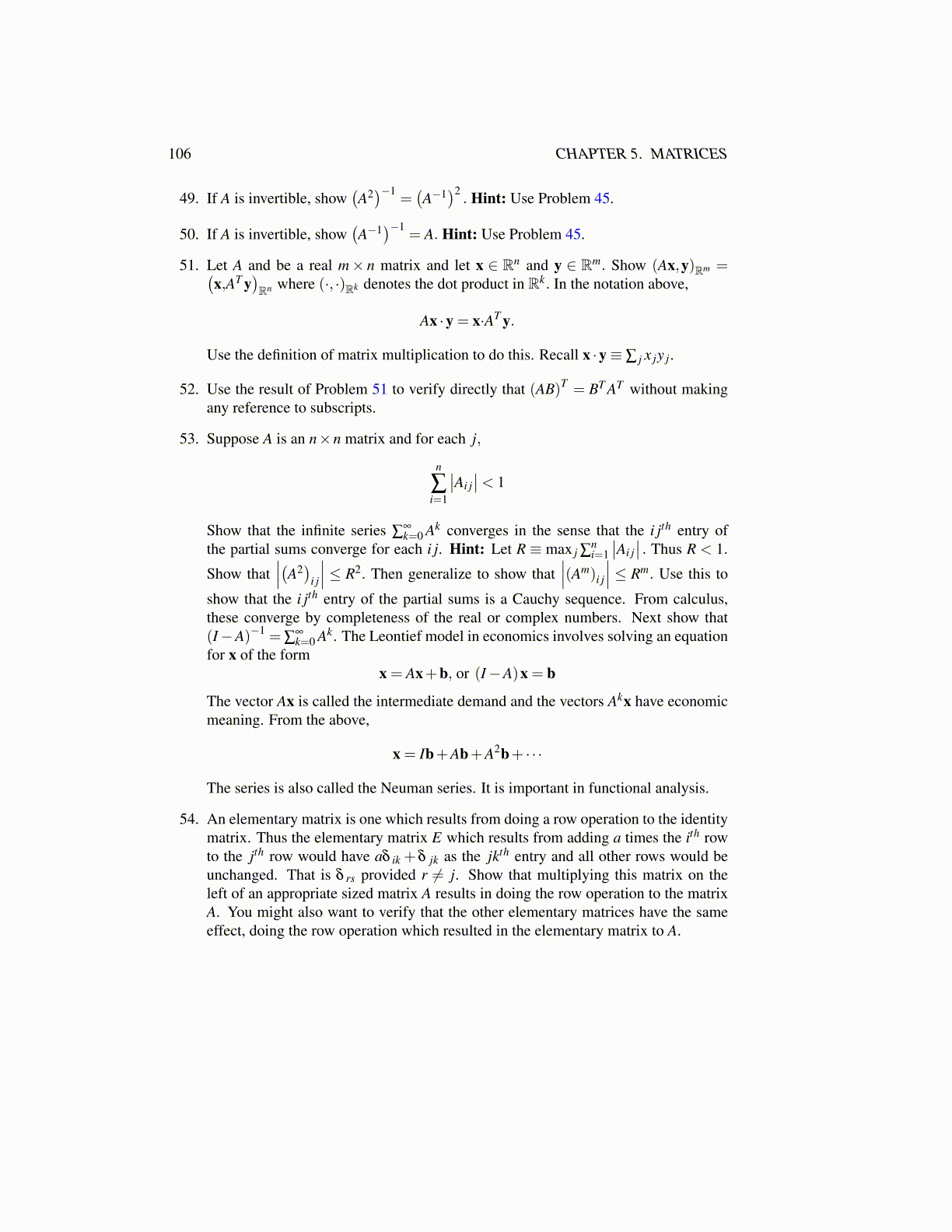
106 CHAPTER 5. MATRICES
49. If A is invertible, show(A2)−1
=(A−1
)2. Hint: Use Problem 45.
50. If A is invertible, show(A−1
)−1= A. Hint: Use Problem 45.
51. Let A and be a real m× n matrix and let x ∈ Rn and y ∈ Rm. Show (Ax,y)Rm =(x,AT y
)Rn where (·, ·)Rk denotes the dot product in Rk. In the notation above,
Ax ·y = x·AT y.
Use the definition of matrix multiplication to do this. Recall x ·y≡ ∑ j x jy j.
52. Use the result of Problem 51 to verify directly that (AB)T = BT AT without makingany reference to subscripts.
53. Suppose A is an n×n matrix and for each j,
n
∑i=1
∣∣Ai j∣∣< 1
Show that the infinite series ∑∞k=0 Ak converges in the sense that the i jth entry of
the partial sums converge for each i j. Hint: Let R ≡ max j ∑ni=1
∣∣Ai j∣∣ . Thus R < 1.
Show that∣∣∣(A2
)i j
∣∣∣ ≤ R2. Then generalize to show that∣∣∣(Am)i j
∣∣∣ ≤ Rm. Use this to
show that the i jth entry of the partial sums is a Cauchy sequence. From calculus,these converge by completeness of the real or complex numbers. Next show that(I−A)−1 = ∑
∞k=0 Ak. The Leontief model in economics involves solving an equation
for x of the formx = Ax+b, or (I−A)x = b
The vector Ax is called the intermediate demand and the vectors Akx have economicmeaning. From the above,
x = Ib+Ab+A2b+ · · ·
The series is also called the Neuman series. It is important in functional analysis.
54. An elementary matrix is one which results from doing a row operation to the identitymatrix. Thus the elementary matrix E which results from adding a times the ith rowto the jth row would have aδ ik + δ jk as the jkth entry and all other rows would beunchanged. That is δ rs provided r ̸= j. Show that multiplying this matrix on theleft of an appropriate sized matrix A results in doing the row operation to the matrixA. You might also want to verify that the other elementary matrices have the sameeffect, doing the row operation which resulted in the elementary matrix to A.